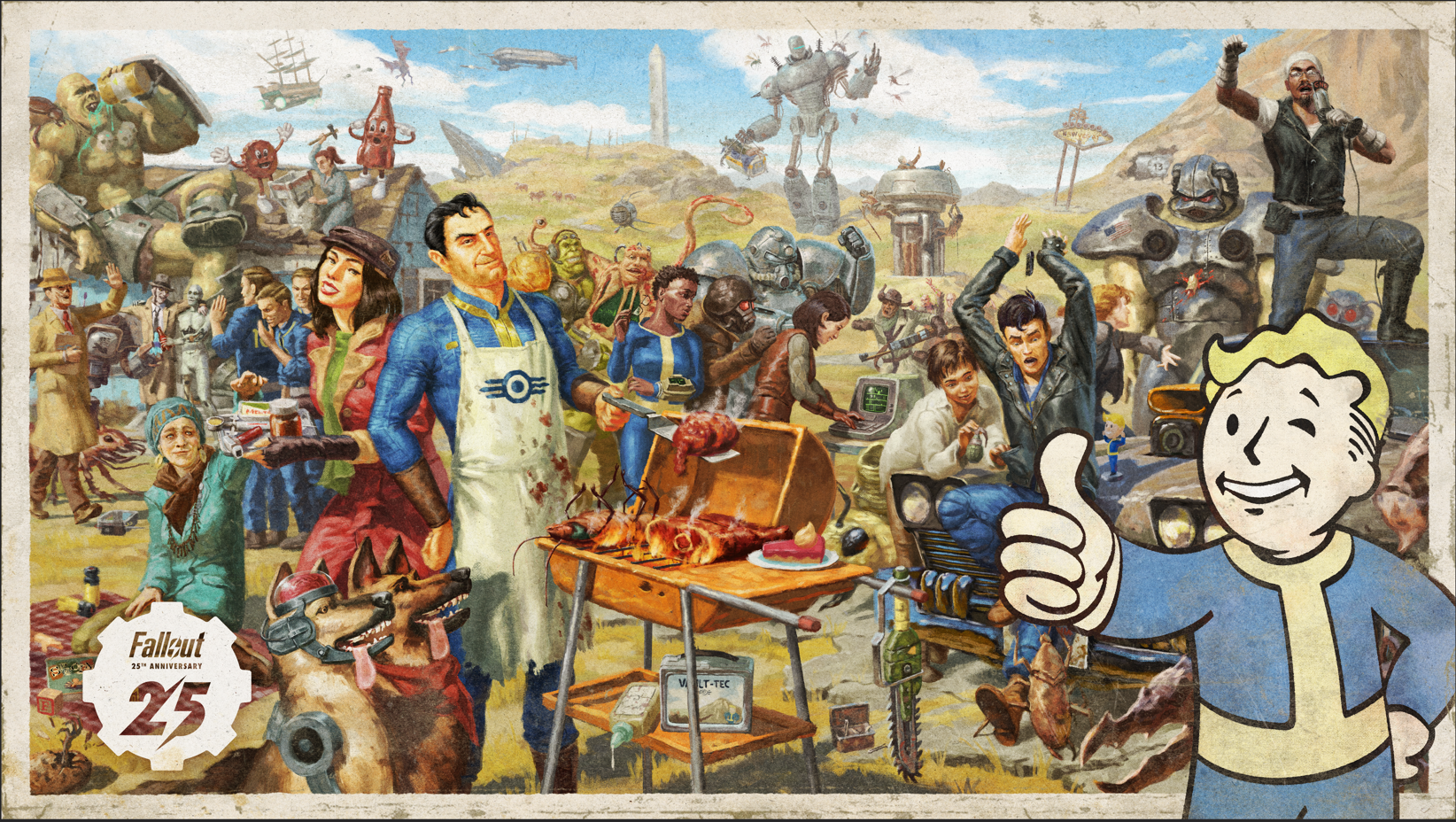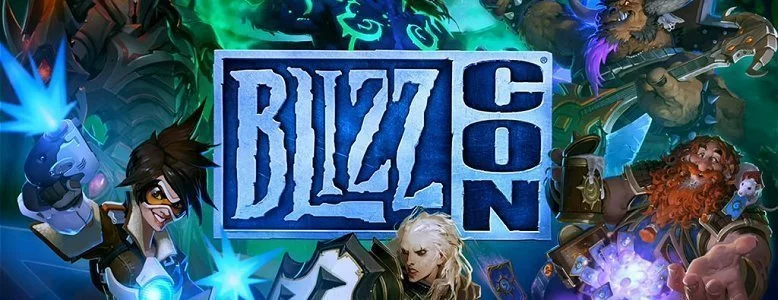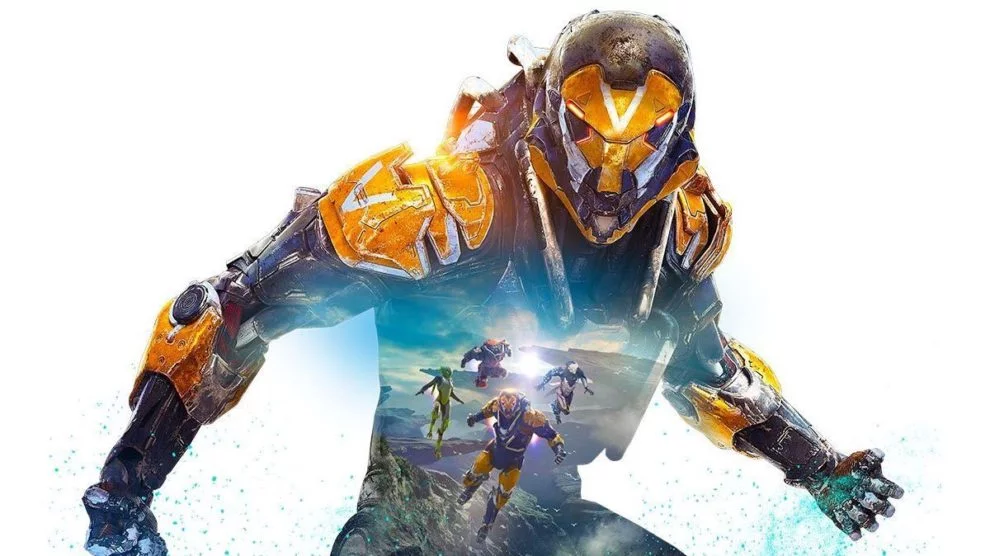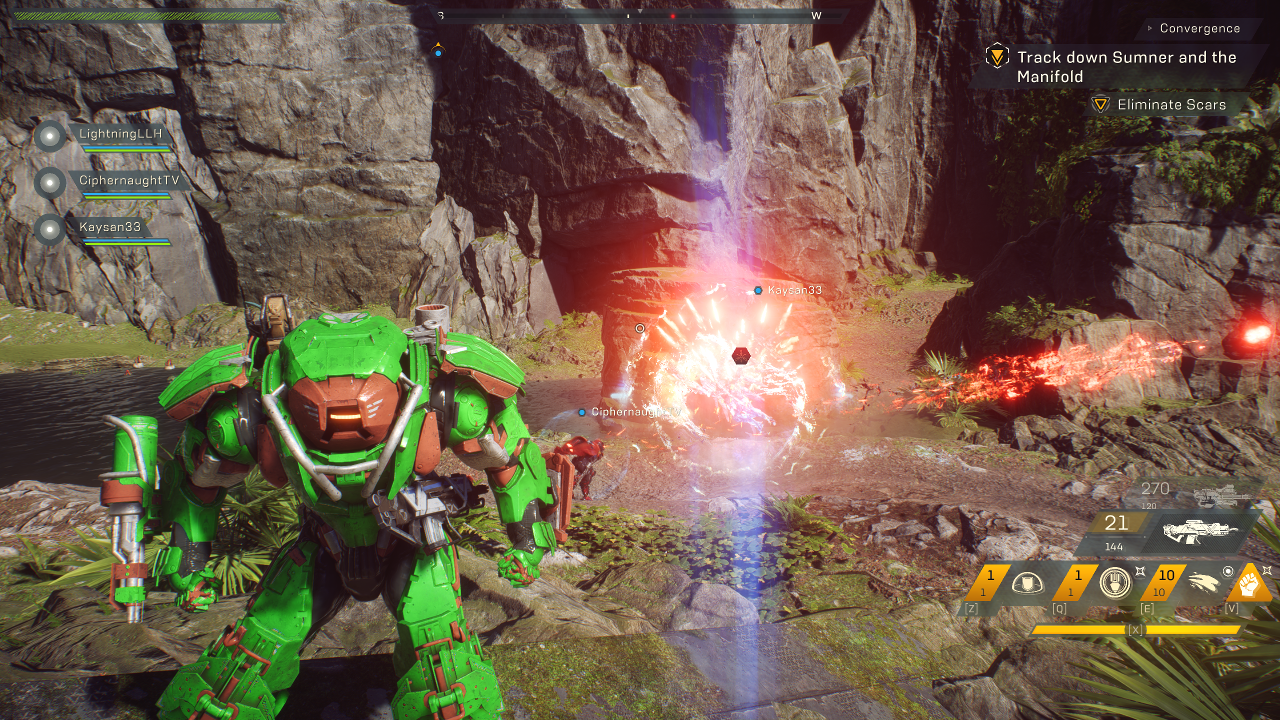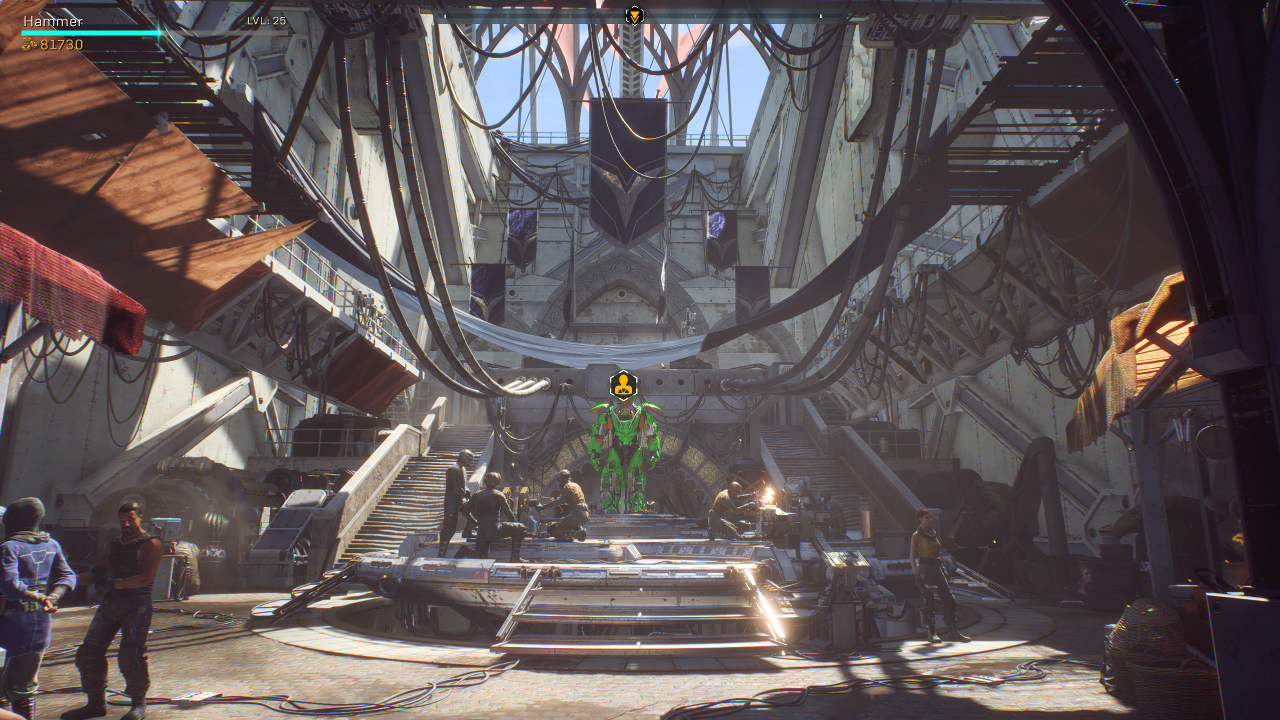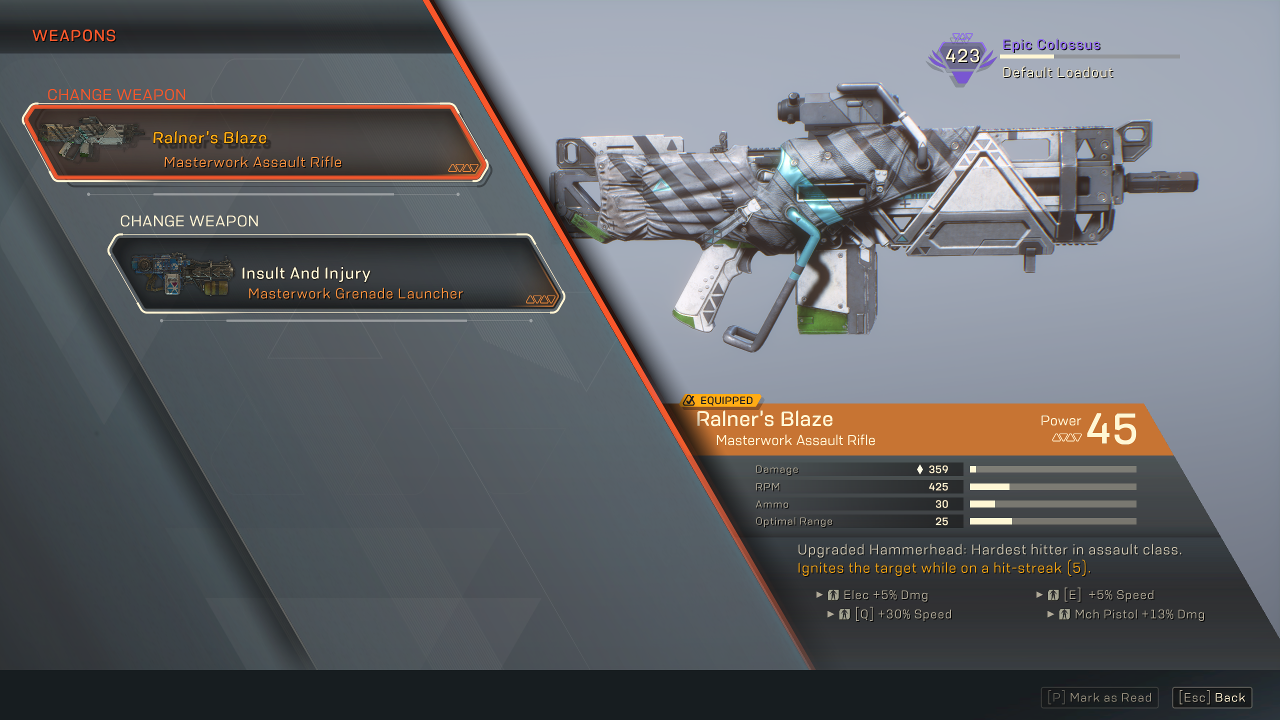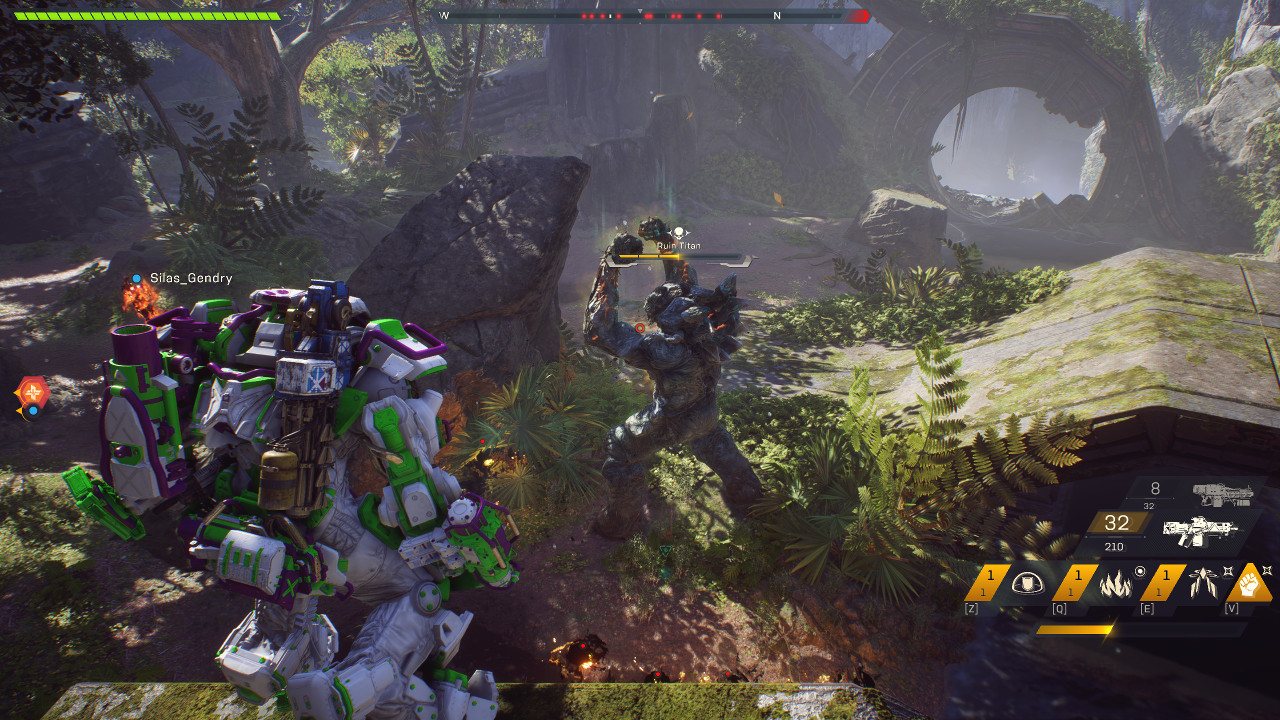It’s been a long time since Bioware’s Anthem was first announced back at E3 2014. Seemingly a reaction to a certain two other large, shared-world looter shooter games that were announced and launched around the same time, Anthem was to be Bioware’s first big step away from its previous darling series, Mass Effect. It’s been almost five years from that first announcement to now, so just how has the new IP from one of the powerhouse RPG devs launched? Sadly, not well.
Anthem is set on the world of Bastion, a wild world lashed by untamed energies that warp reality and manifest all manner of beasties that endanger those who live there. This energy, known as the Anthem of Creation, was harnessed by beings called the Shapers, who attempted to use it to forge the world as they wanted it. The Anthem wasn’t DTF (down to forge) though, and the Shapers eventually disappeared leaving only their relics behind. Eventually another race, the Urgoth, took over and had a wild time subjugating the more human inhabitants, before eventually the first mech suit called a Javelin was created and they were overthrown and driven away.
Guns for hire
Anthem puts you in the role of a Freelancer (and that’s what you’re called too), a mercenary who uses their own Javelin to defend the remaining populace from the inherent dangers of Bastion. Javelins come in four flavours: the Colossus, a large tanky mech somewhat reminiscent of the power loader from Aliens, the Storm, the mage Javelin that focuses heavily on ranged elemental damage, the Interceptor, a quick and melee focussed class and the Ranger, the stock standard ‘Space Marine In A Mech Suit’ Javelin. Each of these four have access to a of range different offensive, defensive and supportive skills that allow them to work together and provide the wearer with some protection against the hostile wilds.
As well as the various beasties lurking out in the wild, you’ll also frequently run into one of the three unfriendly factions present on Bastion. Firstly, there are the Outlaws, roving bands of baddies who happily engage in slavery, theft and general skulduggery. Then there are the Scar. These scavengers are a little more out there than the other two factions who are mostly humans, as they’re literally just thousands of bugs working together in armour to try and consume the world for themselves. Finally, you have the Dominion, the main antagonists of the campaign who run a fascist state and want to use the Anthem of Creation to extend their reach.
The story sees you setting out to quell the Heart of Rage, a large cataclysm event that destroyed one of Bastions largest cities when it begun. This Heart of Rage is a wild outpouring of energy from the Anthem, caused when the Dominion attempted to harness the Anthem for their own use. Rather than controlling the energy, the Dominion instead accidentally unleashed its raw power, destroying the city and spawning all manner of nasties in the process.
Sexy danger
While the story isn’t particularly new or ground-breaking, it does a good job overall of slotting the player into the universe. The pacing could have been better, with a rather large hurdle potentially blocking progress just under half way through before the final rush towards the finish. While the main story is just okay, it’s the stories that happen around your missions that really bring your home base, Fort Tarsis, and the entirety of Bastion to life.
Each time you return back to the Fort you’ll find several characters have something to say. Engaging in a conversation with them will give you a snippet of life within the Fort and gives you the opportunity to steer them with your advice. While the conversations are basic, often boiling down to a positive and negative response, it’s still a great way to build character and I felt far more invested for them. These little chats do prove to be a double-edged sword though, as the slow movement speed you have when traversing Fort Tarsis combined with the sheer number of conversations to have often equates to equal time spent in-mission and in the fort just chatting.
The excellent voice acting and character animation expected from a Bioware title is on full display in Anthem. Cyphers, people who can telepathically communicate with each other and javelin pilots, for example are more jittery and move around a lot in conversations – presumably due to them feeling the energy of the Anthem.
Sadly, Bioware have fallen into somewhat of a trap when it comes to communicating lore in game. Around the Fort you’ll find various collectibles that appear after some missions which give more information about the world of Anthem. There’s historical tales, notes, emails to your in game mailbox, murals and even radio dramas to be found, but once collected they mostly just pop into your cortex to be forgotten about. To be clear, communicating lore is not easy to pull off in a looter-shooter. Destiny failed at it totally, though Bungie did somewhat fix this with Destiny 2, and the closest we’ve had to a good implementation comes in The Division, though the sheer amount of lore necessary to establish a world such as Anthems means many players will simply mark all entries as read and move on.
In the end
Once the campaign is done and dusted, Anthem gets down to business as the looter shooter it’s designed to be. The core end dame loop revolves contracts, strongholds and freeplay, with some quickplay thrown into to help the indecisive out. Strongholds are quite similar to a strike from Destiny, or even one of the repeatable missions in The Division. There are three on offer upon completion of the campaign; Tyrant Mine, seen in the beta and featuring a big ol’ bug, The Temple of Scar, by far the best Stronghold that takes you deep into a Scar base and Return to the Heart of Rage, a replaying of the last mission. While fun to play, Strongholds haven’t proved to be particularly generous in terms of loot, so most players have instead turned to the next two options.
Contracts are essentially someone’s to do list, stringing together several different objectives together into a few encounters. These haven’t proven to be particularly good for getting loot either, unless you have a legendary contract of course, so instead most players turn to freeplay. Freeplay is, as the name suggests, Anthem’s free-roam game type. In this mode you’re set free on the map with three others to explore, take on public events and farm resources and chests as much as your heart desires. This can be a lucrative, if hard to coordinate method of farming gear (there’s no map markers, no fast travelling to team mates and no public event tracking here). That is of course, unless you crash.
In freeplay your drops aren’t saved until you exit the mode, meaning should you lose connection (something that happens too frequently) your items are simply gone. This wouldn’t be such a problem if loot and loot progression wasn’t already an overall lacklustre experience, but with a hard cap on epics that hits you all to fast and a very, very low drop rate on masterworks and legendaries even in Grandmaster it proves to be very painful.
So, what if the looting is unrewarding right? That’s only half the title, and as long as the “gunplay” is good a la Destiny everything should be fine, right? Well, sadly, the shooter half of Anthem doesn’t hold up to well either. Combat in Anthem can be loosely divided into two sections: gunplay and abilities. Most of the guns in the game feel pretty average to use, with only one or two being exciting enough to make me want to use them all the time. Masterworks spice things up here, with some added abilities or features that make them interesting, but they’re so deep in the game that you could easily be turned off before you get there. Thankfully the ability system does make up for the boring gunplay somewhat, but the game does a very average job of explaining how they all work.
The core of the ability system revolves around the combo. Combos hit for huge damage, and to achieve a combo you first have to prime a target by applying a status effect and then detonate with another “detonator ability”. These are represented in the UI by a circle within a circle and a shuriken respectively, though the game never tells you this. Combos are the backbone of the ability system, and the game never once deems it necessary to inform its player how they can tailor their abilities to make use of it. Then there’s the elemental abilities which, depending on their typing, will do more or less damage to shields and armour. This isn’t explained either, and players may be left wondering why their lightning abilities barely scratch armoured targets and why their acid does nothing to shields.
Titanic trouble
Regardless of those little quirk, once you get the system down you can have a lot of fun blowing up enemies of all shapes and sizes with your combos, revelling in the oh so rewarding clang of a combo being procced. Each of the javelins have their own combo effect, which we’ve detailed here, and each of them can be useful in their own way. This simple piece of class diversity is an excellent way to avoid a team being all the same javelin and makes for some fun combo combos. With a well put together team comp you’ll be able to blast your way through large mobs, burn down elites and legendaries and chunk down almost all bosses with your mixture of abilities. I say almost because some harder enemies have increased resistance to effects, meaning it takes longer before you can get that combo off. While this makes sense in theory, in practice this is a little over-tuned on the higher Grandmaster difficulties and cuts down your damage output, removing some of the fun from the combat overall.
Once you’ve progressed to the higher difficulties, enemies can be hitting you for almost 1000% more damage than what they are on normal or hard. While ‘enemies take more damage and do more damage’ is a pretty lame way to introduce difficulty anyway, this is doubly unfair thanks to a few bugs the game had during the pre-launch week. For some reason the laws of shield physics that apply to your Javelin have been put out to pasture when it comes to enemies – stop shooting them for a second and that shield you just spent a full clip breaking is already back up again. This is frustrating, but good teamplay can make up for this interesting piece of game design. What it can’t make up for is Titans.
Titans are pretty much the strongest and least fun enemies you’ll ever fight in your time in Bastion. These huge hunks of walking stone tower over your Javelin, and you can pretty much throw all other enemy conventions you know out the window when you fight them. Firstly, Titans are incredibly difficult to apply status effects to. Fire does so little damage to them that it may as well be healing them. This kind of makes sense as they’re fire users themselves, but you can forget setting up a combo that way. Lightning and Ice don’t do much either as they’re not great against armoured targets, leaving you with only Acid left to use as a primer.
Secondly Titans are pretty much immune all the time, giving you only brief windows to lay the hurt on when they’re charging up one of their attacks. Finally, there’s the attacks themselves. Titan attacks come in three flavours; flaming rings of ouch, giant balls of owie and the chest laser of doom. These all hurt a lot, and you can pretty much guarantee a knock down should you be caught by the chest beam on the higher difficulties. Sometimes the Titan will combine its ring attack with some tracking flame orbs when it gets lower on health, and even the mighty shield of the Colossus can’t withstand all of that. Oh, and they only drop one of two pieces of gear on death. Lovely.
Oops, I did it again
While the Titan is quite an extreme example, it shows overall that there have been several bad design decisions in the development of Anthem. Anthem is launching into a world where it has two large competitors who’ve paved the way in looter shooter genre, seemingly set it up for an easier ride to success. Instead of learning from Destiny and The Division and the mistakes they made, instead Bioware opted to iterate its own way and make many of those same mistakes again.
Anthem has launched with a barren and boring end game loot chase, a convoluted and unexplained gear and combat system and the single clunkiest gameplay experience from a triple-A title in recent memory. The menus are supremely over-designed and there are so many long load screens that you spend a noticeably longer amount of time just waiting to play the game at all. You can’t even swap out your gear on a mission should you find yourself poorly equipped, and the mouse controls for PC players are sloppy at best. These are all mistakes that have been made before, but in failing to learn from them Bioware have hamstrung the launch of Anthem in a potentially devastating way.
Despite all of this, all of the long load screens and the frustrations, I still like Anthem. In fact, I like Anthem a lot. I enjoyed the story, I connected with the cast of characters and was invested in the lives of the NPCs in Fort Tarsis. Anthem is fun to play, most of the time, though it definitely doesn’t execute the looter shooter genre very well suggesting that maybe it wasn’t always destined to be one. That’s ok though because fundamentally the game has what it takes to be great. Destiny was average on launch, with its nonsense story, and The Division had no end game to speak of. Bungie fixed Destiny. Massive fixed The Division. Bioware have all the pieces of the puzzle, but right now Anthem isn’t living up to its potential. It’s bad, but not so bad it can’t be fixed.
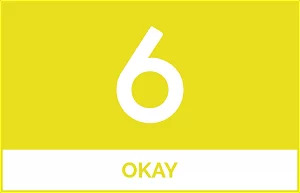 |
|
The good
|
The bad
|
Anthem was reviewed using a promotional code on Windows PC with support via promotional codes on Xbox One, as provided by the publisher. Click here to learn more about Stevivor’s scoring scale.
This article may contain affiliate links, meaning we could earn a small commission if you click-through and make a purchase. Stevivor is an independent outlet and our journalism is in no way influenced by any advertiser or commercial initiative.


